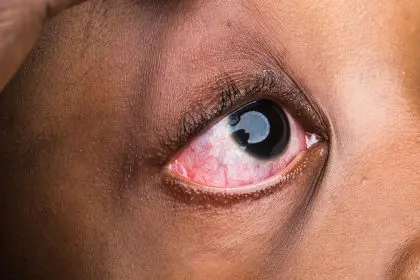Water sustains every system in our bodies, yet many people unknowingly live in a state of chronic mild dehydration. While thirst remains the most obvious indicator of dehydration, your skin often serves as the first visible messenger of your internal hydration status. This relationship between internal organ function and external skin appearance creates a readable map of your body’s hydration needs.
Your kidneys send distress signals through your skin
The kidneys filter approximately 120-150 quarts of blood daily, removing waste and excess fluid. This extraordinary filtration system requires adequate hydration to function properly. When dehydration occurs, the kidneys must work harder to maintain proper blood concentrations of electrolytes and remove toxins.
This increased strain on your kidneys often manifests through your skin in several ways. You might notice darker urine accompanied by dry, itchy skin. The connection lies in how dehydration affects blood flow to the skin. When water intake decreases, the body prioritizes vital organs over skin circulation, resulting in decreased skin cell turnover and accumulation of dead skin cells.
The skin around your eyes may develop a sunken appearance as your body attempts to conserve water. Additionally, skin might lose elasticity more rapidly, as proper kidney function helps maintain the balance of minerals that support skin structure. This decreased elasticity creates more pronounced fine lines, particularly around the eyes and mouth.
Regular water consumption supports kidney function, allowing these crucial organs to efficiently filter waste products. This efficiency directly translates to improved skin texture, with decreased itchiness and flakiness. For optimal kidney and skin health, aim for urine that maintains a light straw color throughout the day.
Your liver reveals its hydration status through your face
The liver performs over 500 vital functions, including processing nutrients, removing toxins, and producing proteins essential for blood clotting. This metabolic powerhouse requires significant water to carry out chemical reactions and transport nutrients and waste products.
When dehydration occurs, the liver cannot efficiently process toxins, potentially allowing them to accumulate in the bloodstream. This processing challenge often appears on your face as increased sallowness, with the skin developing a yellowish or grayish undertone. The central facial area, particularly around the nose and cheeks, may display this discoloration most prominently.
Dehydration also impacts the liver’s ability to process hormones, potentially contributing to increased sebum production. This imbalance may trigger adult acne, particularly around the jawline and chin. The connection between liver function and skin appearance explains why many liver conditions, like jaundice, manifest through skin changes.
Supporting liver health through proper hydration helps maintain clear skin with even tone. When adequately hydrated, the liver efficiently processes toxins, reducing their impact on skin appearance. Many people notice improved skin clarity and tone after increasing water intake, reflecting enhanced liver function.
Your digestive system communicates through your complexion
The digestive tract requires significant water to break down food, absorb nutrients, and move waste through the intestines. The mucosal lining of the digestive system depends on hydration to produce adequate protective mucus and digestive enzymes.
When dehydration strikes, digestive function slows, potentially allowing toxins to remain in the body longer than optimal. This delayed waste removal often appears as skin dullness and congestion across the face, particularly on the forehead and between the eyebrows. Many people notice increased breakouts in these areas during periods of dehydration.
The skin’s relationship with digestion explains why constipation often coincides with skin issues. Both conditions frequently stem from inadequate water intake. The body requires water to maintain proper stool consistency and regular bowel movements, and when prioritizing water distribution during dehydration, the digestive system may receive less than optimal amounts.
Proper hydration supports digestive efficiency, allowing for regular elimination of waste products before they can impact skin appearance. Many people report clearer, brighter complexions after increasing water intake specifically because of improved digestive function. The recommendation to consume water with lemon in the morning primarily benefits digestion, with secondary skin benefits.
Your circulatory system displays its hydration through skin tone
Blood consists of approximately 90% water, making adequate hydration essential for maintaining proper blood volume and circulation. This fluid component allows blood to flow smoothly through vessels, delivering oxygen and nutrients to cells throughout the body while removing waste products.
Dehydration reduces blood volume, forcing the heart to work harder to circulate blood. This circulatory challenge often appears as uneven skin tone, with areas receiving less circulation developing a paler appearance. Many people notice this effect most prominently on their extremities, with hands and feet feeling cold and appearing paler during dehydration.
The face similarly reveals circulatory challenges through increased skin sensitivity and reactivity. You might notice your skin flushing more easily in response to temperature changes, products, or emotional states. This reactive quality stems from compromised circulation that cannot effectively regulate skin temperature and response.
Proper hydration supports healthy blood volume, allowing for efficient nutrient delivery to skin cells. This improved circulation manifests as more even skin tone with a healthy glow. Many people find their skin appears less reactive and maintains more consistent coloring when adequately hydrated.
Your brain signals hydration needs through facial expressions
The brain consists of approximately 75% water, making it particularly sensitive to hydration status. Even mild dehydration can impact cognitive function, mood, and the nervous system’s communication with facial muscles.
This sensitivity often reveals itself through increased tension in facial muscles, particularly around the eyes and mouth. You might notice more pronounced expression lines when dehydrated, as muscle tension increases and skin loses plumpness simultaneously. These temporarily deepened expression lines can eventually become permanent if chronic dehydration persists.
Dehydration also impacts the brain’s regulation of stress hormones, potentially increasing cortisol levels. This hormonal shift can trigger increased inflammation throughout the body, including the skin. Many people experience more pronounced under-eye circles and puffiness during periods of dehydration due to this inflammatory response.
Adequate hydration supports optimal brain function, allowing for appropriate regulation of facial muscle tension and stress hormones. Many people notice their expression lines appear less pronounced and under-eye circles diminish when properly hydrated, reflecting improved neurological function.
The relationship between internal organ function and external skin appearance offers valuable insights into your body’s hydration needs. Rather than viewing drinking water as simply fulfilling a daily requirement, consider it essential support for your organs’ proper function.
Practical strategies for improving hydration include carrying a reusable water bottle, setting regular drinking reminders, and consuming water-rich foods like cucumbers, watermelon, and oranges. Creating consistent hydration habits supports not just skin appearance but overall organ function.
For those struggling to consume adequate water, consider infusing water with fruits or herbs to enhance flavor without adding sugar. Starting each morning with a full glass of water helps replenish losses from overnight breathing and sets a positive hydration pattern for the day.
Remember that individual hydration needs vary based on factors including activity level, climate, and overall health. Rather than adhering strictly to generic recommendations, pay attention to your body’s signals—including your skin’s appearance—to determine your personal hydration needs.
The skin serves as a valuable window into internal hydration status, displaying the effects of dehydration on major organ systems. By recognizing these signals and responding with appropriate hydration, you support both internal health and external appearance simultaneously.
















